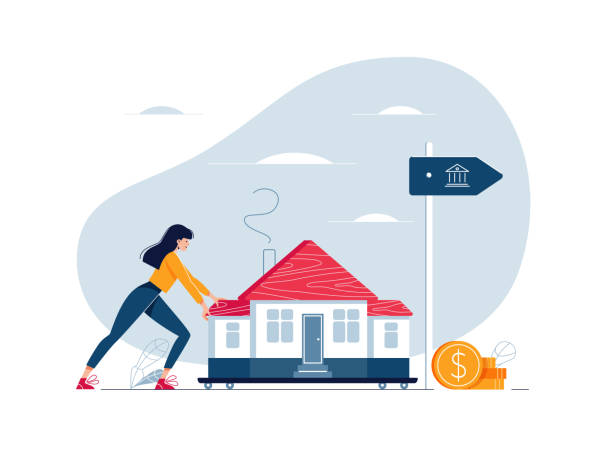A mortgage refinances taking out a new loan to replace the previous one. Your current mortgage is changed, ideally for one with better terms, when you refinance. Refinancing a mortgage is typically done by homeowners to obtain more advantageous interest rates or other loan features that can result in cost savings.
When you refinance your mortgage, a new loan is taken out to replace the old one. The new loan terms may differ, such as switching from 30 years to 15 years or from an adjustable to a fixed interest rate, but the most frequent modification is a lower interest rate. You can refinance to lower your monthly payment, pay off your loan sooner, pay less in interest overall, and access the equity if you need it
Refinancing can go between 3% and 6% of the loan’s principal. A primary mortgage requires an appraisal, a title search, and application fees, so a homeowner must assess whether it’s a prudent investment.
According to a general rule, refinancing is advantageous if the new rate is 1% lower than the one you currently have. More specifically, consider whether the monthly savings are sufficient to improve your life significantly or if the total savings over the loan will benefit you.
1.Reasons to Think About Refinancing
One of the most compelling reasons to refinance is to obtain a mortgage with a lower interest rate. Consider refinancing when interest rates fall to shorten the term of your mortgage and pay much less in interest payments.
Depending on interest rates and depending how much time you plan to stay in your present home, switching to a fixed-rate mortgage (or an adjustable-rate mortgage) may make sense.
Homeowners typically refinance to save money, lower monthly payments, pay debt, or withdraw cash from home equity. However, refinancing has risks, like losing equity, exposing your home to foreclosure, or being subjected to prepaid penalties on your previous loan.
To decide on a refinance, think about all of the costs and risks associated with closing on a new loan and compare it to the benefits you will receive over the life of the new loan.
Refinancing can sometimes result in a lower monthly payment. A lower monthly mortgage bill can be very appealing if you’re struggling with cash flow. Lowering your interest rate or extending your loan term could save you hundreds of dollars in monthly payments.
Changing to an adjustable-rate mortgage (ARM) may also result in a lower monthly payment. However, interest rates on these loans fluctuate over time, and if rates rise significantly, your payment may become unaffordable.
Even if you don’t get a lower rate or a shorter loan term, refinancing may sometimes be a good idea. One example is getting out of an ARM. If you’re worried about future interest rate hikes, refinancing from an ARM to a fixed-rate mortgage can help.
You could also borrow money to pay off high-interest debts. This strategy may work if you have a solid plan to eliminate toxic debts, especially since home loan interest rates are much lower than credit card interest rates. 8 However, if the plan fails, remember that you may lose your home in foreclosure or have your vehicle repossessed.
2.Types of Refinancing
Rate-and-term refinance
This is a primary type of refinancing in which the loan’s interest rate, the term (length of repayment), or both are changed. This can lower your monthly payment or save you money on interest. The amount you owe will generally remain the same unless you roll some closing costs into the new loan.
Short refinance
If you are having issues with your mortgage payments and are on the verge of foreclosure, your lender may offer you a new loan that is less than the first amount borrowed and forgive the difference. While a short refinance saves the borrower from the financial consequences of foreclosure, it comes at the expense of a credit score hit.
Reverse mortgage
If you are older than sixty years, you may be eligible for a reverse mortgage, which allows you to withdraw the equity in your home and receive monthly payments from your lender. You can use these funds for retirement, medical bills, or other purposes. You won’t have to repay the lender until you leave the house, and while the income is tax-free, interest will accrue.
No closing cost
It allows you to refinance without paying closing costs upfront; instead, those costs are rolled into the loan, resulting in a higher monthly payment and, most likely, a higher interest rate. If you intend to stay in your home for a shorter time a no-closing-cost refinance makes the most sense.
Refinancing a mortgage is a good idea when you will benefit financially from a new loan. When you refinance, you may waste money or increase your risk, so weigh the benefits and drawbacks of your old loan versus a new loan to determine whether it’s worth the cost.


Recent Comments